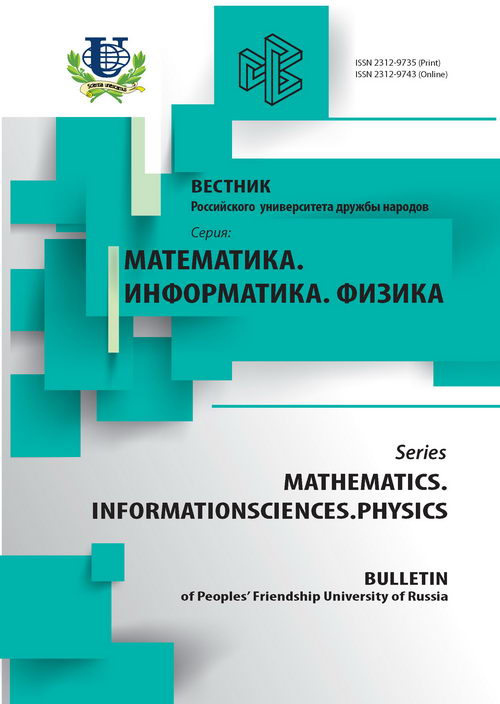Stability Research of Population Dynamics Model on the Basis of Construction of the Stochastic Self-Consistent Models and the Principle of the Reduction
- Authors: Demidova AV1, Druzhinina OV2, Masina ON3
-
Affiliations:
- Peoples’ Friendship University of Russia
- Institution of Russian Academy of Sciences Dorodnicyn Computing Centre of RAS
- Yelets State University named after Ivan Bunin
- Issue: No 3 (2015)
- Pages: 18-29
- Section: Articles
- URL: https://journals.rudn.ru/miph/article/view/8602
- ID: 8602
Cite item
Full Text
Abstract
The three-dimensional model of interaction of populations taking into account the competition and diffusion of species is considered. For research of model the combination of known methods of synthesis and the analysis of models, the principle of a reduction and the developed method of construction of the stochastic self-consistent models is used. Existence conditions of equilibrium states are obtained and the analysis of stability is made. Stability conditions on the basis of the principle of a reduction of a problem about stability of solutions of differential inclusion to a problem on stability of other types of the equations are offered. The specified principle assumes transition from the vector ordinary differential equations to vector differential inclusion and the fuzzy differential equation, taking into account change of parameters of different types in the studied models. For the considered model of population dynamics synthesis of the corresponding stochastic model on the basis of application of a method of construction of the stochastic self-consistent models is carried out. The structure of stochastic model is described, Fokker-Planck equation is written out, and the rule of transition to the stochastic differential equation in the form of Langevin is formulated. The offered approach allowed to carry out the comparative analysis of qualitative properties of the models considering the competition and diffusion of species in deterministic and stochastic cases. Stability conditions can be used for studying of dynamic behavior of models of population dynamics. The received results are aimed at the further development of methods of construction and the analysis of stability of nondeterministic mathematical models of natural sciences.
About the authors
A V Demidova
Peoples’ Friendship University of Russia
Email: avdemidova@sci.pfu.edu.ru
Department of Applied Probability and Informatics
O V Druzhinina
Institution of Russian Academy of Sciences Dorodnicyn Computing Centre of RAS
Email: ovdruzh@mail.ru
O N Masina
Yelets State University named after Ivan Bunin
Email: olga121@inbox.ru
Department of Mathematical Modeling and Computer Technologies
References
Supplementary files















